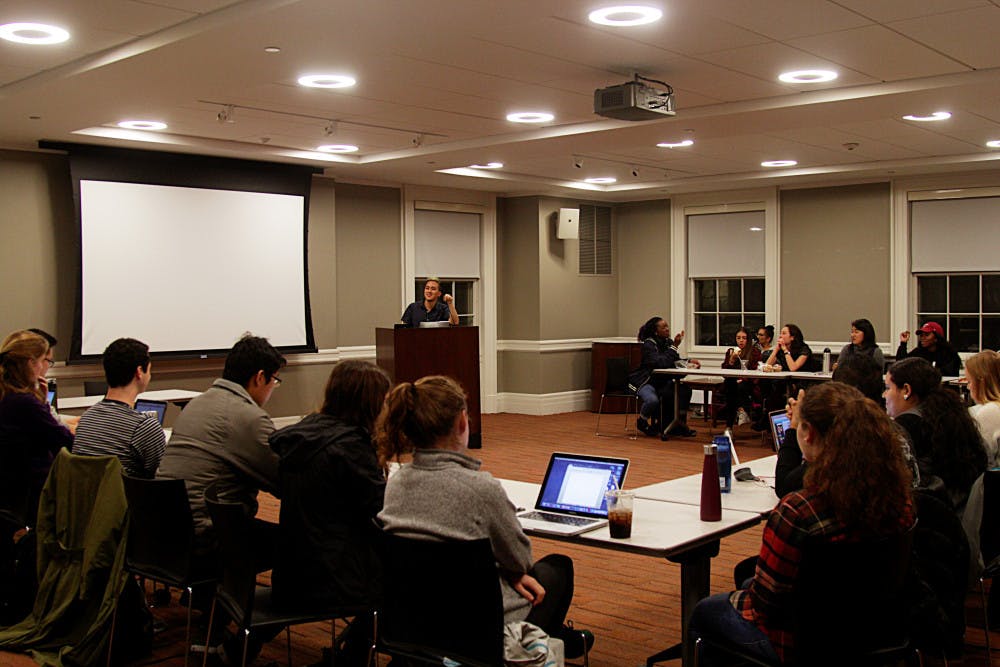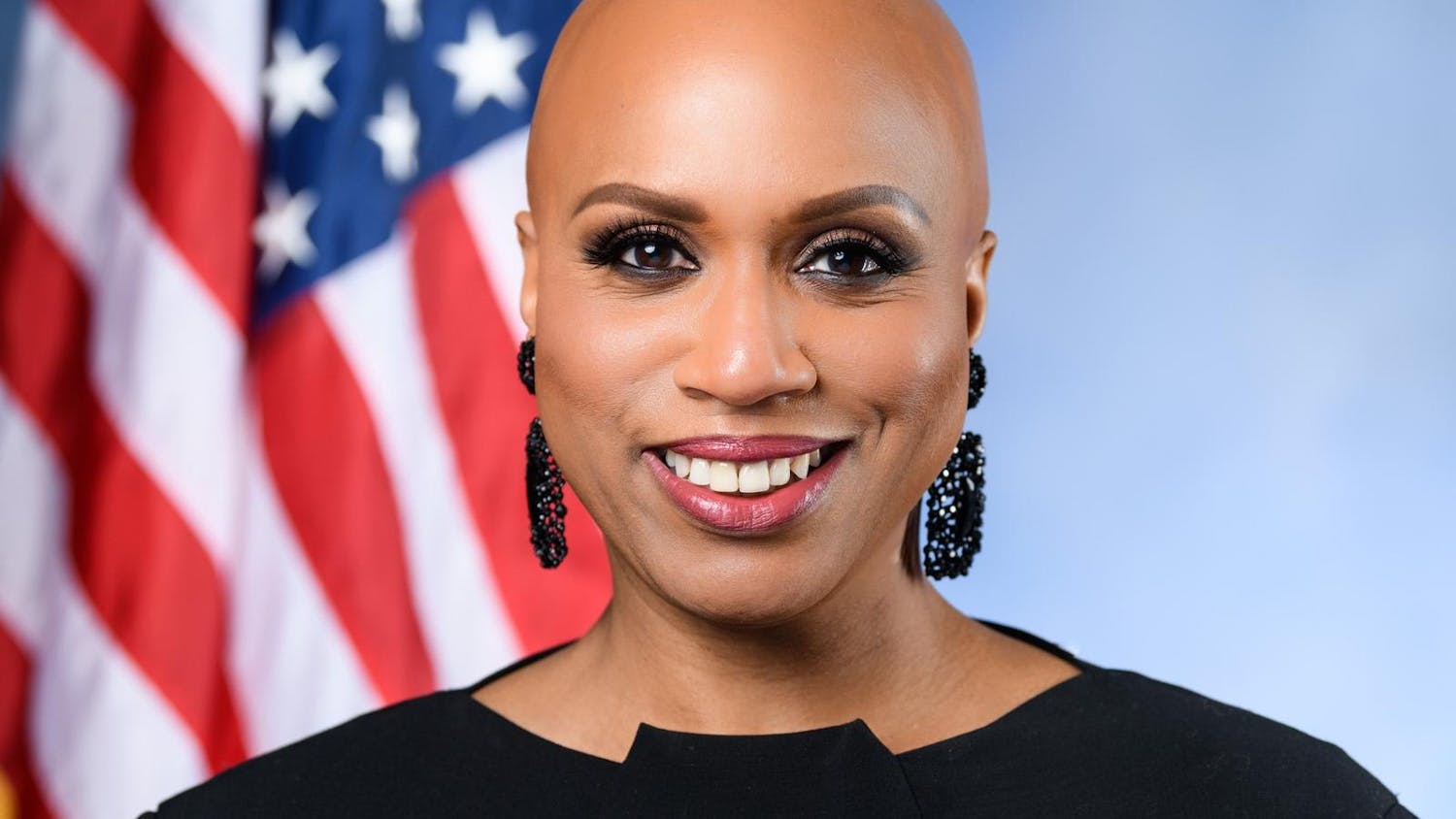The Undergraduate Council of Students passed the Low-Income Student Events Fund Implementation Resolution at its meeting Wednesday night. The resolution will make certain University events and activities accessible to students with an expected family contribution of less than $5,000. Emily Doglio ’17, who co-wrote the proposal that resulted in the creation of the First-Generation College and Low-Income Student Center, also spoke, and the council discussed University support for Deferred Action for Childhood Arrivals and undocumented students.
The Low-Income Student Events Fund is a partnership between UCS, the Undergraduate Finance Board and Vernicia Elie, assistant dean for financial advising. The fund will initially consist of a UFB allocation of $5,000 per semester, said Viet Nguyen ’17, UCS president. The fund will be put toward low-income student admission to sports events, off-campus parties, theater shows and ticketed Student Activities Office events held by student groups. “All these activities — … going to a show, going to school-sponsored events — are part of the college experience,” Nguyen added. “We want everyone to have equal access regardless of their financial background.”
The fund should give each student who utilizes it access to up to five ticketed events per semester, Nguyen said. Students eligible for funding will receive a list of events by email and will be able to sign up for the events that interest them on a shared document up until a week in advance, he added. Elie will then contact individual student groups to ensure that the students who have indicated interest will be admitted to the upcoming events and activities of their choice, Nguyen said.
“This is different from other models that have students bring a card to the show, and there’s a separate line,” he said, adding that this method clearly indicates what students are low income, which can be alienating for them.
Students whose expected family contribution exceeds $5,000 can still apply for funding and have their applications evaluated by Elie, said Naveen Srinivasan ’19, chair of the student activities committee. The council set the cut off at $5,000 based on the expected number of students who will use the service.
“As we move the cut-off higher, (the number of students eligible) exponentially grows,” Nguyen said. “If we raise it to $10,000, the funding would be too thin to help individual students.” But the council hopes to increase the fund and the range of activities that it covers in the future, Nguyen added.
Going forward, “we hope to expand it to also cover dues for student activities,” Srinivasan said. “When we do institutionalize this, it should increase the magnitude of funds available.”
The remainder of the meeting was dominated by discussion of the First-Generation and Low-Income Student Center.
Doglio, who co-wrote the proposal, also spoke at the meeting about the history of first-gen activism at the University. She said that the first 1vyG Conference, which was organized by Brown students and brought together first-generation students from different Ivy League institutions, created “buzz around campus — really a lot of excitement about exploring the first-generation identity more.” At the same time, Doglio joined a group of students who met weekly with deans to discuss the experiences and needs of first-generation students, she added.
When the group of students “found that we didn’t have the autonomy that we wanted or the funding that we wanted,” they formed the organization First-Gens@Brown, Doglio said. “We used that as a platform … to really advocate for the (First-Gen and Low-Income Student Center) … and all of the initiatives,” she added.
Before 1vyG and the creation of First-Gens@Brown, “no one had talked about class issues at Brown, and when they did it was very hush-hush,” Nguyen said.
The focus of the center is making “sure that the institutional resources are there to support students.” It also aims to add nuance to an identity that was previously simplified in order to secure a “support system and buy-in from the administration and the community,” Nguyen added. “Separating first-gen and low-income is one of the first steps because those are used interchangeably a lot of the time, but they’re not the same,” he said.
Nguyen also spoke about the University’s efforts to support DACA-status and undocumented students in recent weeks. “They’re bringing in the top immigration scholars to Brown to talk to undocumented students about giving them legal advice on how to navigate the uncertainty, not only for them but for their families — things like providing legal services (and) providing emotional support,” he said.
While Columbia recently declared itself a sanctuary campus for undocumented students and aligned with DACA, President Christina Paxson P’19 wrote in an op-ed for The Herald that the University could not “offer legal sanctuary from members of law enforcement or Immigration and Customs Enforcement” as petitions by students and faculty members requested. Regardless, the University will offer a number of protections associated with the term sanctuary campus.
“A lot of fears that university presidents have right now is — if they make a bold statement, especially among elite institutions — how that will affect their undocumented students, their DACA students,” Nguyen said. “They’re worried that doing certain actions will put a target on their back and put students in more jeopardy.”
As a self-declared sanctuary campus, Columbia is not doing any more or less than Brown has already promised to do, said Tim Ittner ’18, UCS vice president. “A lot of the services and supports that the University will provide are exactly the same as what Columbia will be doing,” he added. “University presidents don’t want to promise something that they can’t deliver on,” Nguyen said.
The council also passed the Fall Appointments Resolution of 2016, which assigns student candidates to empty seats on University committees, and the Student Group Constitution Resolution of 2016, which authorizes the existence of new student groups and re-categorizes existing student groups.
Clarification: A previous version of this article stated that President Christina Paxson P'19 wrote in an op-ed in The Herald that the University would not be a sanctuary school. In fact, she wrote that the University could not “offer legal sanctuary from members of law enforcement or Immigration and Customs Enforcement.”





